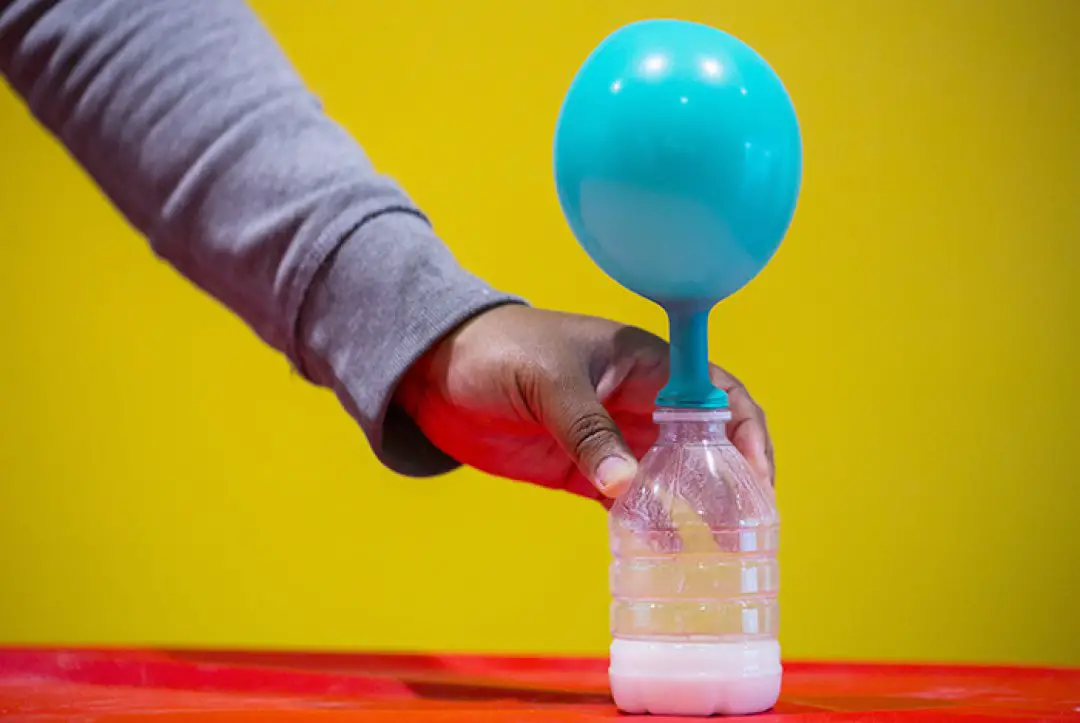Kids always have an inclination towards experiment and science, which is why STEM activities are so much fun with little ones! In the Yeast Balloon Inflation STEM activity, children get to learn about the microscopic fungus and how this fungus is doing its work in our surroundings. What is even better about this activity is that the science experiment is cheap and appealing. Your little scientists will get an opportunity to see the yeast in action and how it can inflate a balloon and make it explode. Try this Yeast Balloon Inflation STEM activity with your kids today!
About Yeast Balloon Inflation Activity
Have you ever imagined inflating a balloon without blowing air into it? It’s true. Learning how microscopic fungus works is part of the joy of science, and this simple activity provides your little ones a close-up look at the magical ingredient that makes bread rise. Yeast are tiny organisms that consume sugar and release carbon dioxide gas, which is what gives bread its signature light, airy texture. But these little creatures can also blow up balloons! This STEM activity will teach you how different ingredients and temperatures influence yeast. So keep your little ones busy and satisfy their curiosity with this simple and amazing STEM activity you can do in the comfort of your homes. Let’s inflate a balloon with yeast!
Supplies Required For Yeast Balloon Inflation Activity
- Glass Bottle with a Narrow Neck
- 2 Tablespoons dry yeast
- 1 Tablespoon Sugar
- Party Balloon
- Bowl Full of Lukewarm Water
Steps Involved In The Yeast Balloon Inflation Activity
1. First of all, fill the bottle up with about one inch of warm water. When yeast is in a cold or dry state, the microorganisms are relaxing.
2. Now, add all of the yeast from the packet and smoothly rotate the bottle for a few seconds. As the yeast softens, it becomes alive and comes to life!
3. Now, add the sugar and swirl it around some more. Like people, yeast requires energy to be active, so we will add some sugar.
4. Now blow up the balloon a few times to stretch it out then place the neck of the balloon over the neck of the bottle.
5. Let the bottle sit in a warm place for about 20 minutes. If all goes well the balloon will start to inflate!
Note: Always wear safety goggles and hand gloves while dealing with chemicals. Adult Supervision is essential.
Science Behind It
Yeast is a single-celled microorganism that feeds on sugar and generates carbon dioxide (CO2) plus ethanol. As the yeast feasts on the sugar, it generates carbon dioxide gas. This process is known as fermentation. The captured CO2 stores inside the balloon, slowly inflating it. The same process happens as the bread rises. Carbon dioxide from yeast supplies thousands of balloon-like bubbles in the dough. This is what provides baked bread its airy texture.
In this STEM activity, yeast keeps producing carbon dioxide and makes the balloon bigger and bigger. Kids can also design their own experiments to determine which variables influence the yeast’s ability to produce CO2. Simple science at its best!






